
Edmond O’Brien (September 10, 1915 – May 9, 1985) would have turned 100 today. I’ve seen him in 39 movies and a handful of TV episodes. He won an Oscar for Best Supporting Actor in THE BAREFOOT CONTESSA (1954) and was nominated in the same category for SEVEN DAYS IN MAY (1964). He acted in Hollywood for 35 years (1939-1974), becoming one of America’s most distinguished character actors, but also having a nice run as a leading man for close to a decade following World War II. He played in a lot of westerns and crime movies during this period and those are the films of his that interest me the most.

He had an everyman appeal and a working-class quality to him, similar to Frank Lovejoy, his co-star in THE HITCH-HIKER and the subject of my 12th blog entry, back on March 28, 2012.
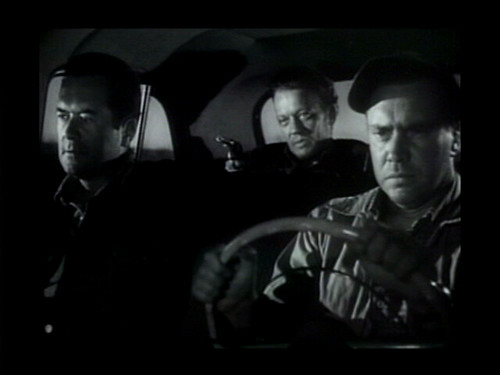
Frank Lovejoy, William Talman, Edmond O’Brien in THE HITCH-HIKER, directed by Ida Lupino.
O’Brien often played working men. In westerns, he didn’t play gunslingers, or outlaws or lawmen, but instead played men tasked with doing a job, whether as mining engineer (SILVER CITY), railroad construction boss (DENVER AND RIO GRANDE) or soldier (WARPATH).
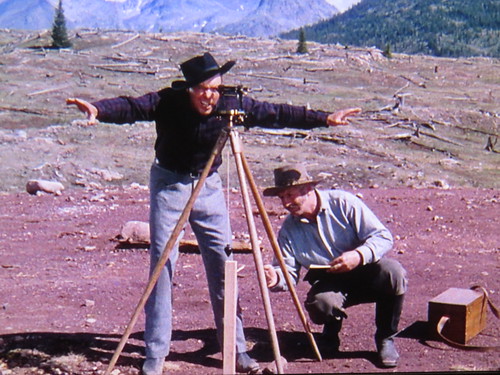
Our first glimpse of O’Brien in DENVER AND RIO GRANDE as he surveys the landscape before laying down track for the title railroad
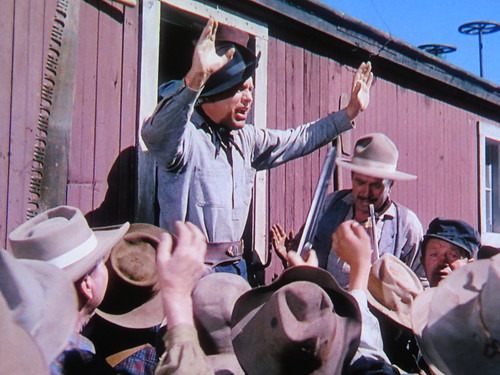
O’Brien exhorts his crew to defend their tracks from a rival railroad line
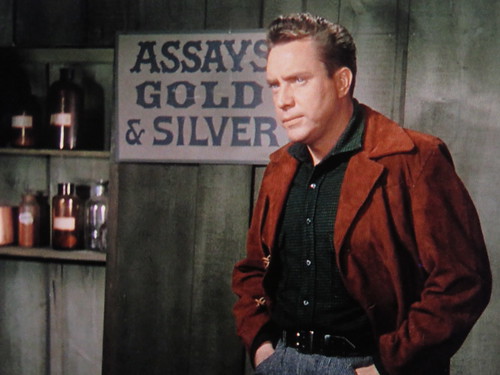
O’Brien as a grim-faced mine assayer in SILVER CITY
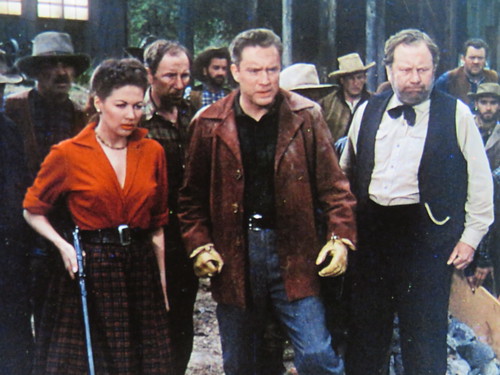
O’Brien, with Yvonne De Carlo on the left and Edgar Buchanan on the right, a daughter-father team who’ve hired O’Brien to get the silver out of the mine they’ve leased before the lease runs out, but finding violent opposition from the greedy mine owner in SILVER CITY
In crime movies, he often played beat cops, whether a patrolman in a radio car (BETWEEN MIDNIGHT AND DAWN) or a corrupt detective (SHIELD FOR MURDER). In THE TURNING POINT (1952), he plays a special prosecutor heading a crime commission out to take down a syndicate, little knowing that his own father, a veteran cop, is in cahoots with the syndicate head. In THE SHANGHAI STORY (1954), he plays a medical doctor interned in a Shanghai hotel with other westerners by Communist soldiers in post-revolutionary China. At great risk to himself, he takes up the mission of a slain American agent. In D.O.A. (1950), arguably his most famous starring role, he plays a self-employed accountant in L.A. who finds out he’s been poisoned while on a trip to San Francisco and only has days to find out who poisoned him and why before he dies. Even when he played a gangster, as in 711 OCEAN DRIVE (1950), he starts out as a working man, a telephone technician, who finds his skills useful to a local mob-run wire service taking bets on horse races. As his schemes prove profitable, he rises up in the mob. No matter what side of the law he was on, he always played men who came up through the ranks. (Like most actors his age, he was a World War II vet, having served in the Army Air Force.)

O’Brien in D.O.A.

O’Brien in 711 OCEAN DRIVE
In THE KILLERS (1946), directed by film noir pioneer Robert Siodmak, O’Brien plays an insurance investigator who probes the murder of a gas station worker insured by his company and, in the process, uncovers an unsolved payroll robbery from six years earlier at a factory that his company also insured. THE KILLERS was O’Brien’s first leading role, although he was somewhat overshadowed in the marketing by two other newcomers in the film, Burt Lancaster and Ava Gardner. But he fit a certain leading man template that became quite common in the postwar era. He looked and sounded like a lot of war veterans out there and his characters often had an angry edge that fit well into the style of filmmaking then common in Hollywood that would later come to be known as film noir. He was not a Central Casting type of leading man.
He was often cast in rugged action parts and frequently had to fight onscreen. He was doubled for the most strenuous scenes, but he sure takes a lot of punishment himself—often on location, as these scenes attest.
SILVER CITY (1951):
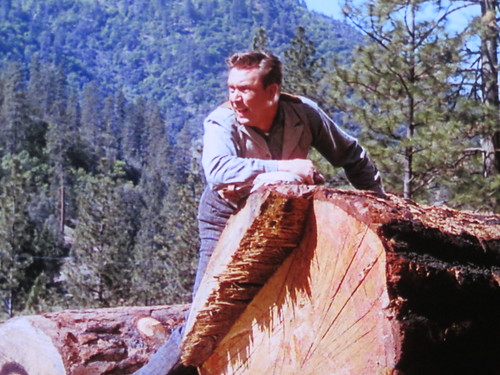

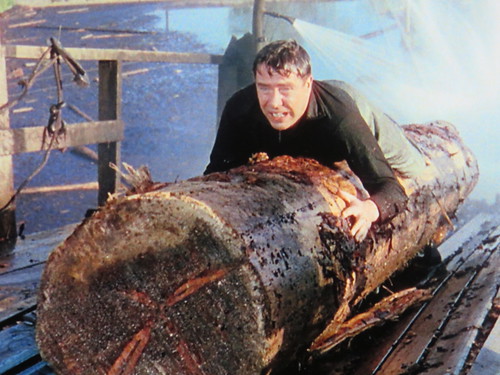
DENVER AND RIO GRANDE (1952):
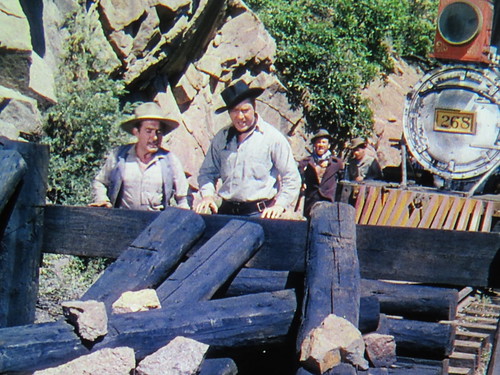

In my favorite movie with O’Brien in a leading role, Raoul Walsh’s WHITE HEAT (1949), he plays a treasury agent, Hank Fallon, who is assigned to go undercover in prison and share a cell with armed robber Cody Jarrett (James Cagney) who has recently robbed a shipment of treasury bills that have not turned up anywhere. Fallon has to get close enough to Jarrett to find out the identity of the man who fences the bills for Jarrett.
Cagney takes the film’s top acting honors for his portrayal of a psychotic criminal mastermind, deeply attached to his enabling mother (Margaret Wycherly), with a neurotic streak that manifests itself in debilitating migraine headaches that come at inopportune moments, but it’s O’Brien’s Fallon (or Vic Pardo, as he’s known in prison) who has to react to Jarrett and respond to his moods and outbursts and somehow earn his trust and become a member of the gang. He wouldn’t have been at all believable if the character had been played by a more straight-arrow leading man of the period (think Dennis O’Keefe).
O’Brien has some great acting moments in WHITE HEAT also, but they’re not quite as brazen or conspicuous as Cagney’s so they never get the attention they deserve. When Fallon first arrives in prison and has to get his shots in the infirmary, he realizes that Bo Creel (Ian MacDonald), one of the inmates helping administer the shots, is a convict he’d once arrested and who would be sure to recognize him. (He’d known of Creel’s presence in the prison but was assured he’d be released by the time he got there.) The look of shock when he sees Creel is a prelude to some quick thinking on his part after Parker (Paul Guilfoyle), the inmate behind him on line, gives him a shove, prompting “Pardo” to start a fistfight with him, forcing the guards to enter the fray and carry him out—to solitary–before he can be spotted and recognized by Creel.
A few scenes later, in the prison factory, Pardo saves Jarrett’s life from an “accident” engineered by Parker, a stooge of Jarrett’s rival on the outside, Big Ed (Steve Cochran). Jarrett remains ungrateful and suspicious of Pardo’s attempts to get close to him. But after a visit from his mother, in which she threatens to “take care” of Big Ed, the troubled Jarrett suffers from a migraine collapse on the factory floor and Pardo covers for him and rubs his head in the exact spot where Jarrett’s mother customarily rubbed, thereby substituting, in Jarrett’s mind, for the mother he’s been separated from and finally earning Jarrett’s trust.
O’Brien’s best moment comes after he’s planned an escape with Jarrett and has all the arrangements made with his Treasury boss, Evans (John Archer). He’s in the mess hall with hundreds of other inmates when Jarrett, sitting across from him, learns of the death of his mother from a newly arrived inmate and responds with an outburst of grief and violent fury that is absolutely heartbreaking. As Cagney begins to wail and lash out at the guards, Fallon watches in shock as his carefully laid plans fall apart.
O’Brien got to play a vicious killer himself, but with a twist, in SHIELD FOR MURDER (1954), which he co-directed (with Howard W. Koch). Here he plays a Los Angeles police detective who kills and robs a bagman for a local bookie operation and then has to deal with the consequences as he becomes increasingly unhinged, going so far as to pistol-whip the two men sent by the mob boss to tail him—in an Italian restaurant in front of the other customers!
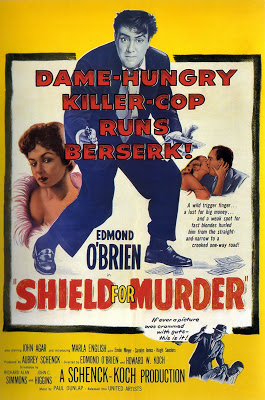
I haven’t seen SHIELD FOR MURDER in over five years, but here’s what I wrote about it back then:
O’Brien is a plainclothesman named Barney Nolan who arrests a little old bookie on a dark street and shoots him in the back and robs him of $25G and then shoots again and yells “Freeze,” as if the guy was running away. This is all in the pre-credits sequence. The bookie works for “Packy Reed,” who wants his money and sends a couple of goons to shadow O’Brien. O’Brien pistol whips both of them in an Italian restaurant. One of them, played by Claude Akins, later catches up with O’Brien and shoots it out with him in a crowded public swimming pool . It’s that kind of picture. I loved it. There’s so much good stuff in it. John Agar plays Nolan’s protégé, who refuses to believe the worst about him. Marla English plays Nolan’s hot girlfriend. When he visits her at the nightclub where she works (didn’t all cops’ girlfriends work in nightclubs in the ’50s?) and sees her in a very sexy Cigarette Girl getup, he freaks out and tells her to take it off and threatens her boss. Emile Meyer plays the blunt precinct chief who’s suspicious of Nolan’s story, given that Nolan has a history of shooting suspects, but is willing to sweep it under the rug if no witness turns up. One does. When O’Brien is on the run, you KNOW he’s in trouble when he has to rely on Richard Deacon to hide him!
Around the same time, I wrote the following about O’Brien’s portrayal of a more straight-laced cop in BETWEEN MIDNIGHT AND DAWN (1950), directed by Gordon Douglas.
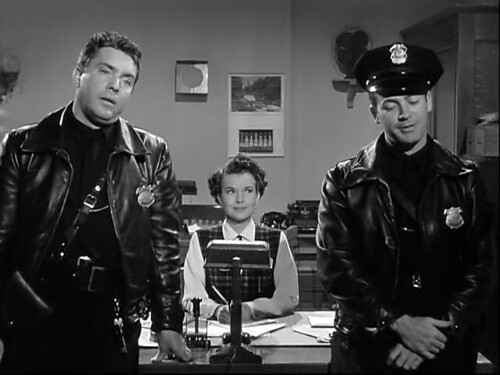
O’Brien, Gale Storm, Mark Stevens in BETWEEN MIDNIGHT AND DAWN (1950)
Never identified as L.A., but clearly shot there. Edmond O’Brien and Mark Stevens star as radio patrolmen who drive around at night. There’s lots of great stuff in this movie. O’Brien is a typically blunt cop of the era. When he arrests two girls and their boyfriends after some shenanigans (the boyfriends shot at the cops!) in the opening, one girl freaks out and screams that she’s never been in trouble. O’Brien: “Well you’re in trouble now.” When she cries that she can’t go to jail, her mother will kill her, O’Brien responds: “Well you should have thought of that before you started hanging around with these hoodlums.”
There’s a car chase through L.A. that’s as good as any car chase I’ve seen in films from that era. The big finale is a stakeout at an apartment house that gets every detail so right and builds suspense so beautifully. It’s a classic case of how to stage, shoot and edit such a scene. It climaxes with the bad guy grabbing a little neighbor girl as hostage and thrusting her out the window to show the cops surrounding the place that he means business. Hardcore. There’s lots of blood and violence in it, too. And a tragic end for one of the main characters. Gale Storm (“My Little Margie”) plays the LAPD secretary that both of the protagonists are in love with.
Around the same time I also saw the one other film O’Brien directed, MAN-TRAP (1961), which he directed entirely on his own. I was so impressed I wrote it up for IMDB:

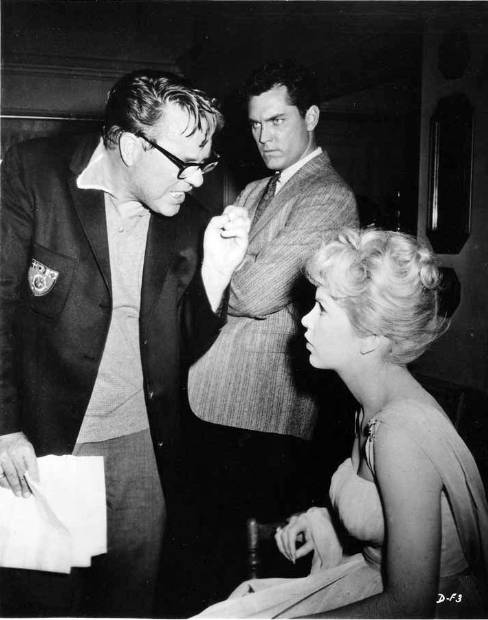
O’Brien directs Stella Stevens on the set of MAN-TRAP, as Jeffrey Hunter watches
When I embarked on a serious devotion to learning about movies as a child (recounted in my blog entry of March 10, 2013), the first film in which I saw O’Brien was THE LONGEST DAY (1962), seen at a neighborhood theater in the fall of 1963. O’Brien played General Raymond D. Barton and shared this scene with Henry Fonda (who played Brig. Gen. Theodore Roosevelt Jr.):
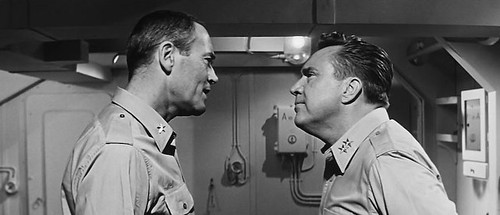
The following spring, in May 1964, I saw O’Brien in SEVEN DAYS IN MAY, in which he played the alcoholic southern senator, Raymond Clark, who, as a favor to embattled President Jordan Lyman (Fredric March), embarks on an investigation, at great risk to himself, into a secret military base that is actually the staging area for an attempted coup against the Lyman administration. As mentioned above, O’Brien was nominated for Best Supporting Actor for this film. (Peter Ustinov won for TOPKAPI.)

Edmond O’Brien, Fredric March in SEVEN DAYS IN MAY
I next saw O’Brien on the big screen in the science fiction thriller, FANTASTIC VOYAGE (1966), in which he played General Carter, who oversees the mission to shrink a crew and a traveling craft small enough to enter an unconscious man’s bloodstream to try and remove a blood clot from his brain.
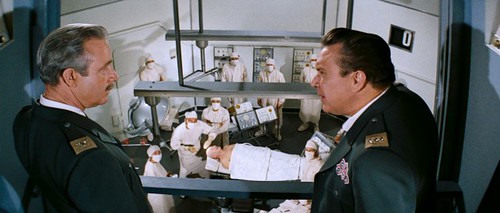
Arthur O’Connell, Edmond O’Brien in FANTASTIC VOYAGE
Around this time, I saw O’Brien on the small screen in John Ford’s THE MAN WHO SHOT LIBERTY VALANCE (1962), in which he plays an embattled, alcoholic newspaper editor (in a part meant for Thomas Mitchell), actively involved in his territory’s campaign for statehood.
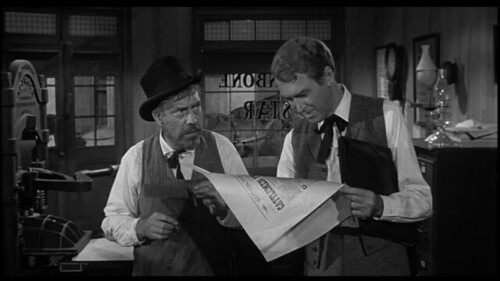
O’Brien, James Stewart in THE MAN WHO SHOT LIBERTY VALANCE
Next on the big screen I saw another film that might be called my favorite O’Brien film, Sam Peckinpah’s THE WILD BUNCH (1969), although he’s more of a supporting character in it than he was in WHITE HEAT (made 20 years earlier). He probably has as much screen time as he did in the earlier film, though not as many lines. But the lines he does have are quite unforgettable. At first sight, I didn’t recognize O’Brien in the role. I had to wait till after his first memorable dialogue scene and being informed by Pike Bishop (William Holden) that their opponent in the shootout during a failed robbery in the town of Starbuck was none other than their former partner, Deke Thornton (Robert Ryan), now leading a motley crew of bounty hunters. When O’Brien’s character intones the startled response, “Deke Thornton?,” in a voice slightly different from his outburst preceding it, I realized that Freddie Sykes, aka “Old Man Sykes,” was indeed O’Brien, caked in heavy makeup on his face and teeth and thick stringy hair and beard. O’Brien was only 52 at the time of production and was made to look 20-30 years older.
His great lines in this scene occur after the gang has discovered that they were tricked and the robbery has only netted them a few bags of steel washers, which they thought were gold coins.
Pike Bishop: They set it up.
Lyle Gorch: “They”? Who in the hell is “they?”
Sykes: [laughs hysterically] “They”? Why, they is the plain and fancy they, that’s who “they” is! Caught you, didn’t they? Tied a tin can to your tail. Led you in and waltzed you out again. Oh my, what a bunch! Big tough ones, huh? Here you are with a handful of holes, a thumb up your ass, and a big grin to pass the time of day with. They? Who the hell is “they?”
Pike Bishop: Railroad men… bounty hunters… Deke Thornton.
Sykes’ rant often got the biggest laugh in the film when I saw it with audiences.
Much later, Sykes figures in the film’s final scene and final exchange of dialogue as he encounters Deke Thornton in the aftermath of the bloody shootout between the Bunch and the Mexican army after Thornton’s bounty hunters have ridden off with the bodies of the Bunch, only to get ambushed by rebels and shot a short distance outside of town (something we hear but don’t see).
Sykes: I didn’t expect to find you here.
Deke Thornton: Why not? I sent them back; That’s all I said I’d do.
Sykes: They didn’t get very far.
Deke Thornton: I figured.
Sykes: What are your plans, now?
Deke Thornton: Drift around down here. Try to stay out of jail.
Sykes: Well, me and the boys got some work to do. You want to come with us? It ain’t like it used to be; but it’ll do.
Interestingly, three of the lead actors, Holden, Ryan and O’Brien, all made their initial marks onscreen in the immediate postwar era, usually in film noir, Holden in such films as SUNSET BLVD. and UNION STATION, Ryan in such films as CROSSFIRE, ACT OF VIOLENCE and THE SET-UP, and O’Brien in THE KILLERS, WHITE HEAT and D.O.A.
THE WILD BUNCH was the last film of O’Brien’s that I saw on the big screen during its initial release. (I would catch a later film of his, LUCKY LUCIANO, 1973, on the big screen during a Francesco Rosi tribute at the Museum of Modern Art sometime in the mid-’70s.)
Getting back to WHITE HEAT, I first saw it on TV as a child and my father watched it with me. I was either eight or eleven, depending on whether I saw it before the old TV broke or after my father brought home another set two-and-a-half years later. (We had no TV between the spring of 1962 and the fall of 1964.) The movie played because a Mets game was rained out, which dates it to the spring of 1962 or the fall of 1964 because the Mets played their very first game on April 11, 1962, sometime before our TV set broke down and they played their last game of the 1964 fall season on October 4, 1964, not long after the new TV set arrived. Since the movie played in the baseball time slot, it was never identified by the station running it, WOR-TV, and my father didn’t recognize it. I knew who James Cagney was and would remember his character name, but I didn’t recognize the other actor and for years afterwards, in remembering the movie and trying to identify it, I thought the other actor was Humphrey Bogart. It wasn’t until high school when I went into a public library in Manhattan for the first time and went through several film reference books that I was able to identify the film by name and learn that it was O’Brien and not Bogart in the second leading role. If I’d seen the film in 1964, it would have been after seeing O’Brien in THE LONGEST DAY and SEVEN DAYS IN MAY, so I’m thinking I would have recognized him at that point and not confused him with Bogart. What further convinces me that I saw it earlier, in 1962, is that in checking the Mets game schedule for 1962, I learned that their first game, set for April 10, was indeed rained out. That could indeed have been when we watched it. It was a Tuesday, well before Easter that year, so it wasn’t a school vacation day, but it could have aired after I’d gotten home from school and my father had a broken leg that winter so he might well have been home from work. Being a baseball fan at the time, I would have been allowed to watch TV on a schoolday afternoon, especially since it was a historic first game for a new New York franchise. And I did have a history of watching movies with my father.
What struck me about the movie at the time, whether consciously or not, and stayed with me for all those years when I didn’t know its name, was the way the characters in the film resembled older men in the neighborhood. They dressed like working-class white guys in the Bronx. They didn’t look like standard movie “crooks” of the 1930s and ’40s. (You know the kind—always wearing wide lapel suits and ties with fedoras.) My father was two years younger than O’Brien and, at that time, 13 years older than O’Brien had been in the film, but he was close to the age Cagney was around the time of the film.
In my eyes, O’Brien does resemble my father a great deal. And when O’Brien’s characters got mad, they did so in a way that definitely recalled my father. He also had a similar body shape to my father and aged like he did, although it took my father much longer to age that way. Coincidentally, they died about two months apart in 1985. (And also coincidentally, O’Brien’s birthday, September 10, also happens to be my parents’ wedding anniversary. They got married the year WHITE HEAT came out and they moved to the Bronx on that date six years later, sixty years ago today.)
The last film O’Brien made was John Frankenheimer’s 99 AND 44/100% DEAD, released in the U.S. on August 29, 1974, and his last TV performance was in an episode of “Police Story” called “Chain of Command,” which aired on January 8, 1974. I’m guessing that the film was shot a year earlier, which would make the “Police Story” episode the very last thing he filmed. I have a DVD set of the first season of that series and have watched that episode and this is what O’Brien looked like in it. He was 58 at the time of filming:
Two other cast members of “Chain of Command,” Charles McGraw and Bill Walker, had been in THE KILLERS. The director of the episode was Leo Penn, father of Sean Penn. Ironically, when this episode aired, I was in southern California and I visited the set of “Police Story” on the Warner Bros. lot possibly on the exact date the episode aired. The episode I watched being shot was “Country Boy,” which starred Kurt Russell, Gary Collins, and Clu Gulager, who was one of the stars of Don Siegel’s remake of THE KILLERS (1964).
There are plenty of other O’Brien films I could have written about here, including THE HUNCHBACK OF NOTRE DAME (1939), his first film, in which he plays Gringoire, an idealistic young poet emboldened by the title character to take on the power structure in 15th century Paris. He was quite a young-and-handsome romantic “juvenile lead” in the film.
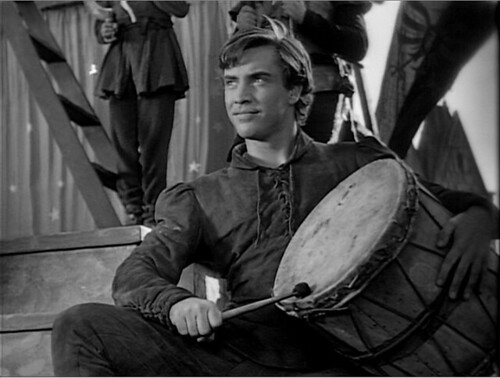
There’s also the Frank Tashlin comedy, THE GIRL CAN’T HELP IT (1956), a crime-and-rock ‘n’ roll parody, in which O’Brien played an ex-bootlegger/gang boss who hires a press agent to make his girlfriend a pop star, with unpredictable results. There’s THE BIGAMIST, directed by Ida Lupino, in which traveling salesman O’Brien has a wife in San Francisco (Joan Fontaine) and a wife in Los Angeles (Lupino). There’s 1984 (1956), an English adaptation of George Orwell’s prophetic novel, with O’Brien in the central role of Winston Smith, a futuristic totalitarian-era everyman. There’s STOPOVER TOKYO (1957), filmed on location in Japan, in which O’Brien plays an American businessman who’s actually a communist spy. In Henry Levin’s TWO OF A KIND (1951), he plays a down-on-his-luck worker at a bingo parlor who gets recruited by Lizabeth Scott to pull a con on a wealthy couple by impersonating their long-lost son. There’s FOR THE LOVE OF MARY (1948), Deanna Durbin’s last movie, in which O’Brien plays a naval officer who’s one of three suitors for Deanna and the one who actually gets her in the end. (O’Brien was only six years older than Durbin.) For someone who wasn’t classic leading man material, O’Brien sure got the girl in a lot of his movies.
He’s also very good in WARPATH (1951), a western made by the same team that gave us SILVER CITY and DENVER AND RIO GRANDE. I meant to re-watch it for this piece, but didn’t get around to it. (SILVER CITY and DENVER AND RIO GRANDE got priority because I have them both on Blu-ray.)
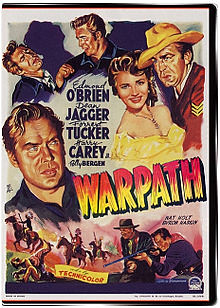
I didn’t mention Joseph L. Mankiewicz’s THE BAREFOOT CONTESSA (1954), in which O’Brien played a Hollywood press agent and won the Best Supporting Actor Academy Award for it. It’s not a film that impressed me in any way and I recall very little about it. Ava Gardner is the star, but if you want to see a great O’Brien/Ava Gardner pairing, check out THE KILLERS.
Finally, there’s the crime melodrama, THE WEB (1947), in which O’Brien’s character is an attorney hired as a bodyguard for a wealthy man who sets up the murder of a rival at O’Brien’s hand acting in apparent defense of his client. The distinction here is that O’Brien’s character name, Bob Regan, just happens to be the name of an old friend of mine from the Hunter College Film Department who is a regular reader and commenter on this blog.
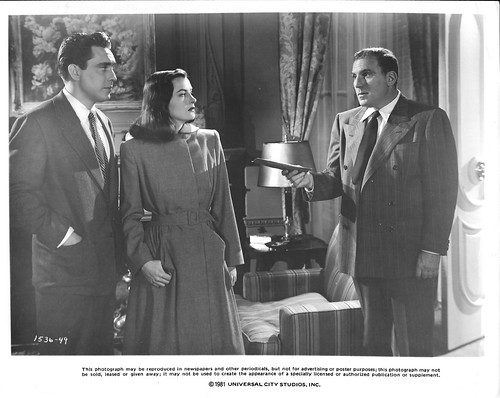
O’Brien as Bob Regan, with Ella Raines and William Bendix in THE WEB
There are also plenty of movies of O’Brien’s I still haven’t seen, most notably Jack Webb’s prohibition-era jazz-infused gangster melodrama, PETE KELLY’S BLUES (1955); Don Siegel’s World War II adventure, CHINA VENTURE (1953); Gordon Douglas’s WWII submarine adventure, UP PERISCOPE (1959); Frank Tuttle’s A CRY IN THE NIGHT (1956), in which O’Brien plays a police captain whose teenage daughter, Natalie Wood, is kidnapped by Raymond Burr just before Burr became a TV star as Perry Mason; Leslie Fenton’s THE REDHEAD AND THE COWBOY (1951), a Civil War western co-starring Glenn Ford and Rhonda Fleming; and O’Brien’s final film, a stylized gangster movie by John Frankenheimer, 99 AND 44/100% DEAD (1974). He’s also reportedly in THE OTHER SIDE OF THE WIND, Orson Welles’ unfinished final film. I hope to see some cut of that—any cut—before I’m gone.
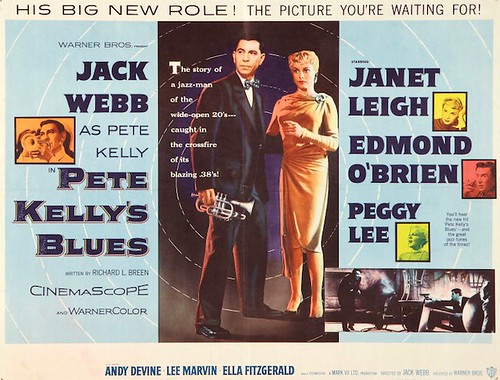
O’Brien worked with a lot of top directors from the studio era: John Ford, Raoul Walsh, Joseph L. Mankiewicz, Robert Siodmak, Don Siegel, Gordon Douglas, Richard Fleischer, Jack Webb, Frank Tashlin, Ida Lupino, and George Cukor, as well as such burgeoning talents in the post-studio era as John Frankenheimer, Sam Peckinpah, and Steven Spielberg, who directed him in a futuristic 1971 TV episode, “LA 2017,” from the 90-minute series about investigative reporters, “The Name of the Game.” Sadly, O’Brien suffered from Alzheimer’s for the last decade of his life, so I’m assuming that’s what caused him to end his acting career. But he did a lot of great work in the 35 years he was active.
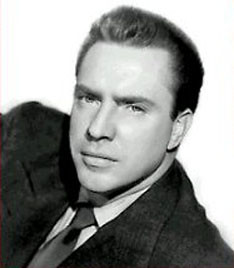
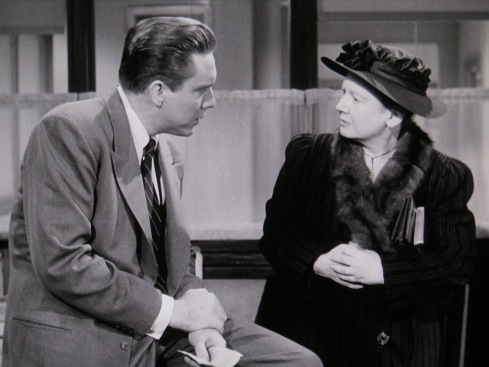
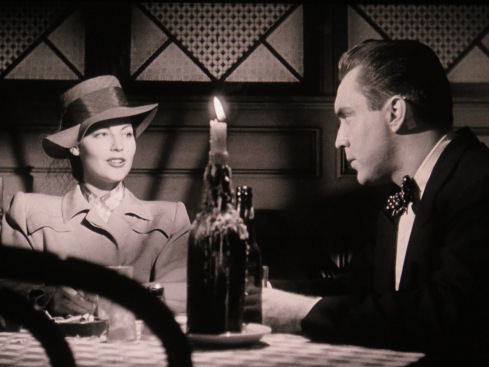
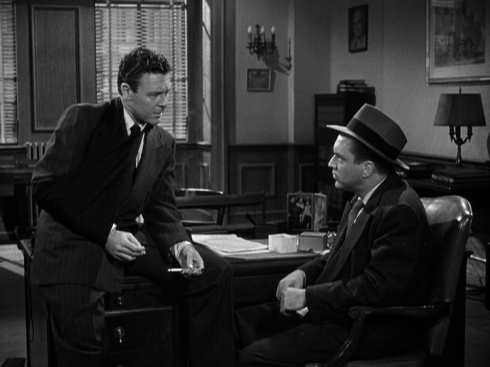
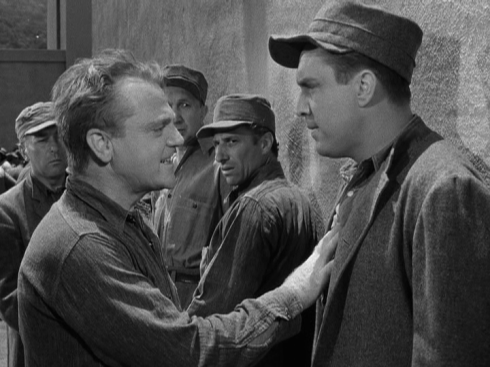
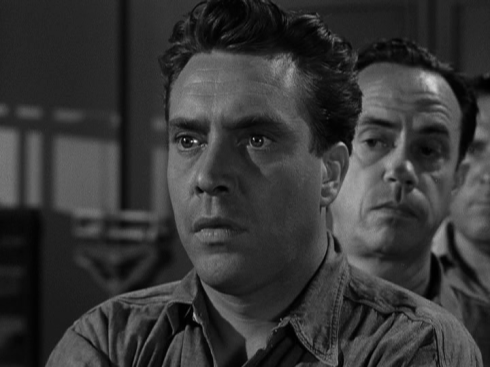
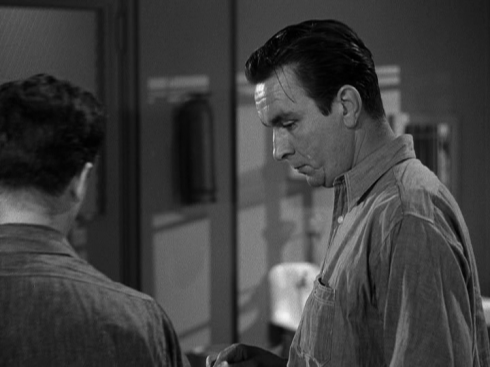
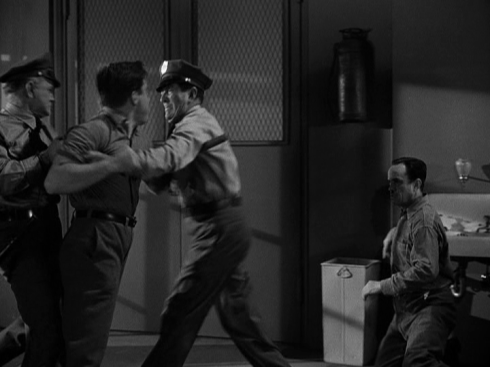
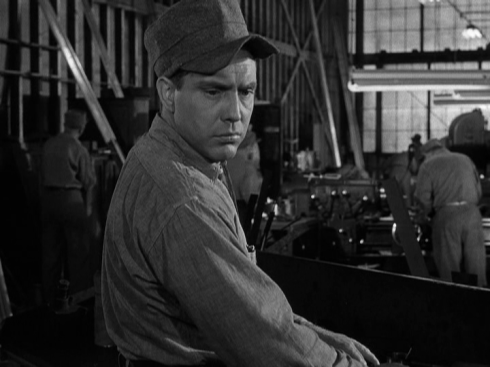
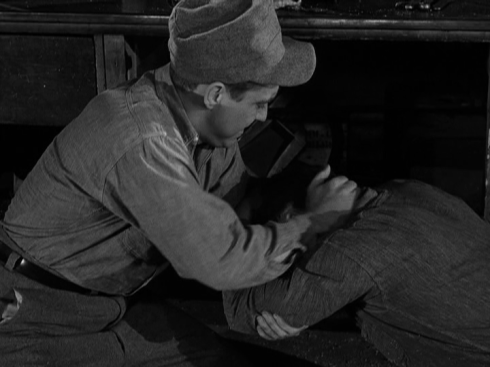

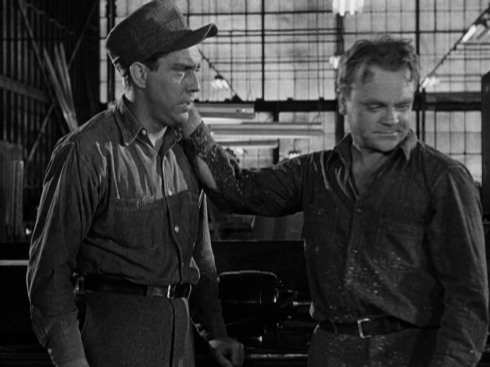
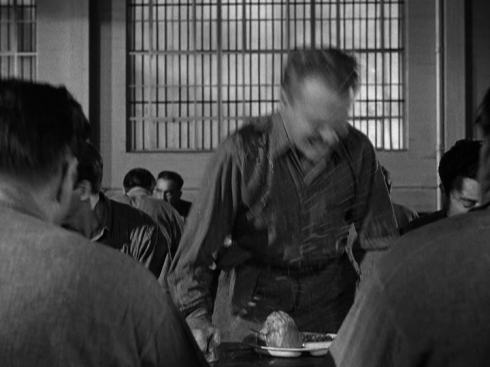

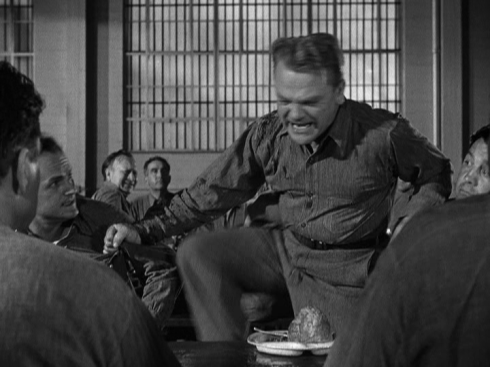
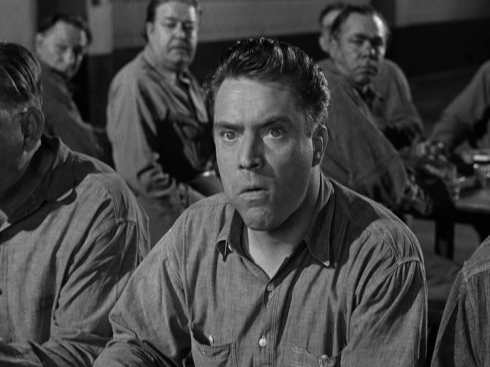
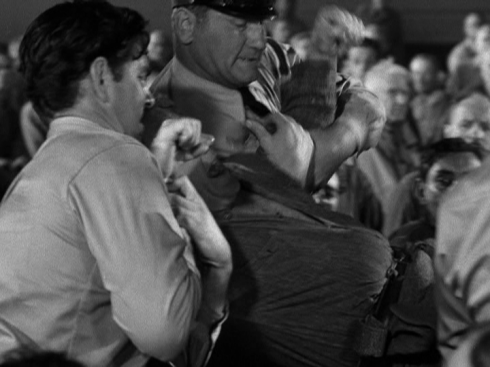
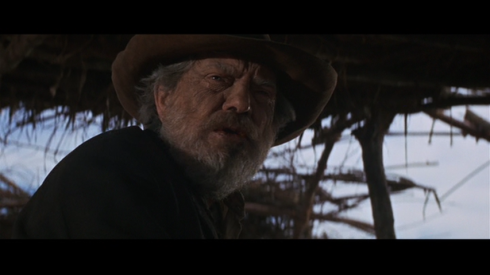
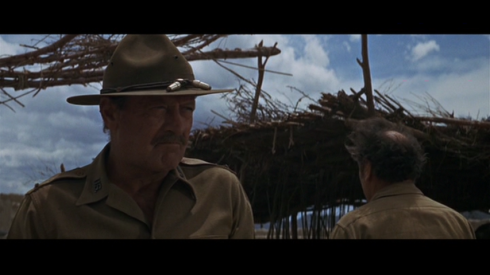
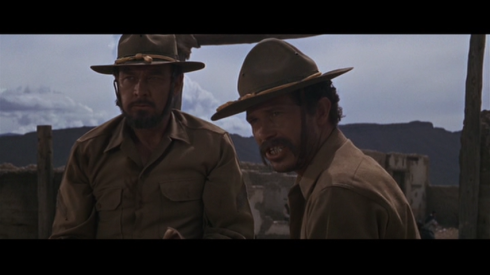
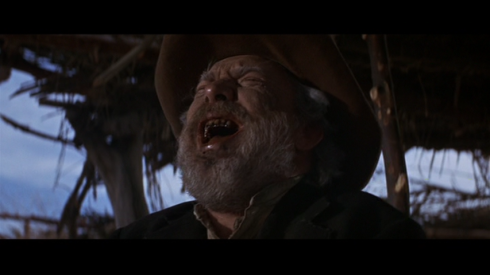
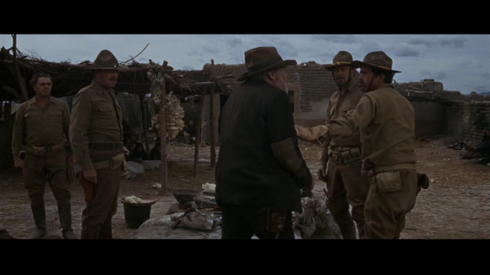
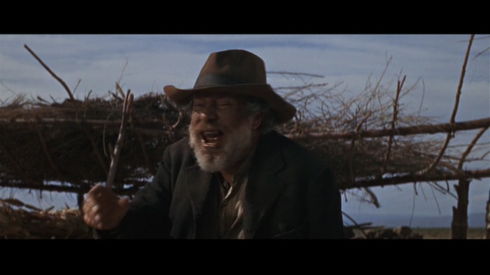
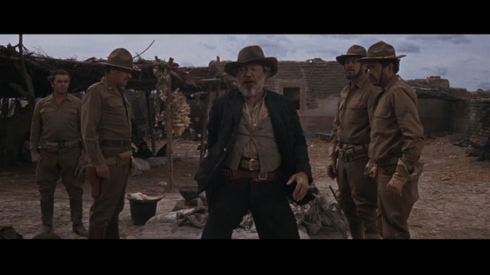
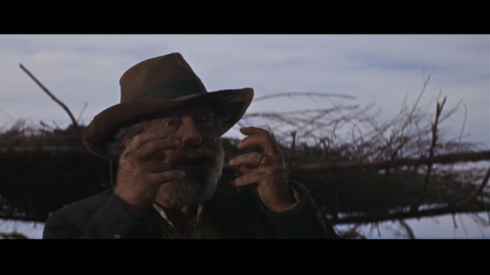
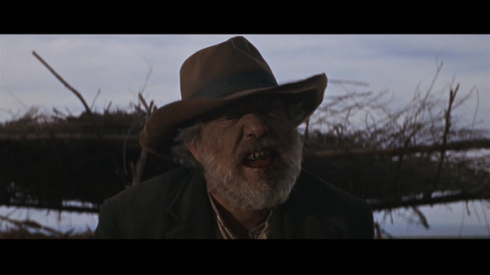
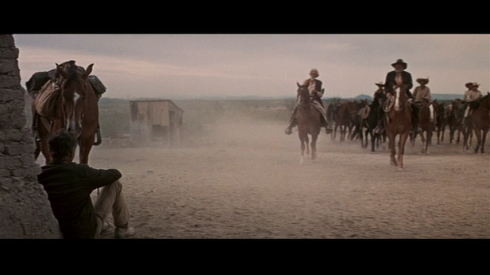
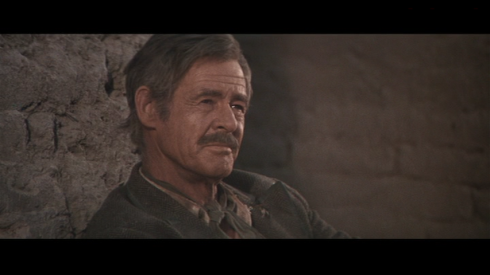
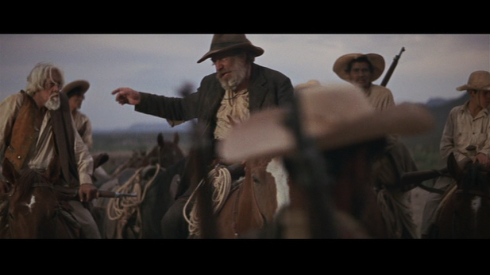
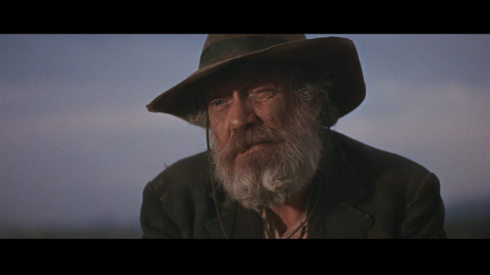
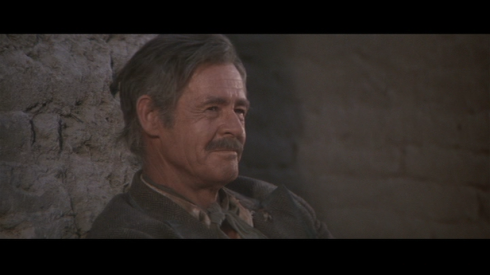
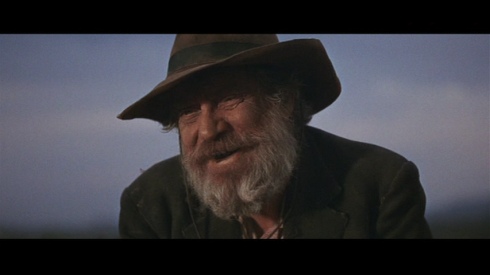
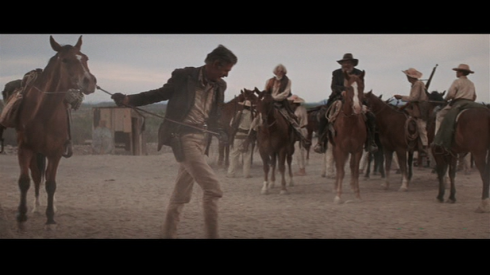



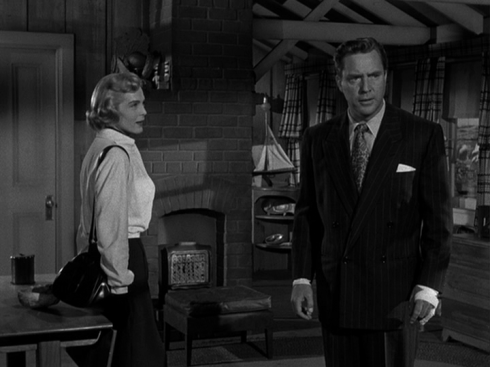
Thank you very much! Great reading. I’ve been watching Edmund O’Brien movies lately but can’t find alot of them. I really enjoy watching him. Thanks again!
I have found many on ru.ok.com.